Beautiful course for those who want to take their skills to the next level.
Upgrade your skill level and widen your artistic horizon!
Materials you will need for this course
BASIC package for self-study START ANYTIME Lifetime access 6 classes 32 videos 9+ hours of video step-by-step tutorials 5 technical exercises 5 final paintings

Buy now and pay it in 4 interest-free instalments over 6 weeks
The list of the lessons
Lesson 1
Types of watercolour paining. Special effects.

In the first lesson you will play with different conditions of paper and watercolour paint to discover four combinations of their mixes.
You will experimenting with special effects using some ingredients from your kitchen pantry. You will learn how to apply masking liquid.
Video 36 min
Lesson 2
Daisy

In this lesson you will be experimenting with masking liquid effects.
The masking liquid is a very helpful “gadget” that you can use to make your painting process easier and faster.
Video 78 min
Lesson 3
Negative space. Multilayered wash. Wild Rose.
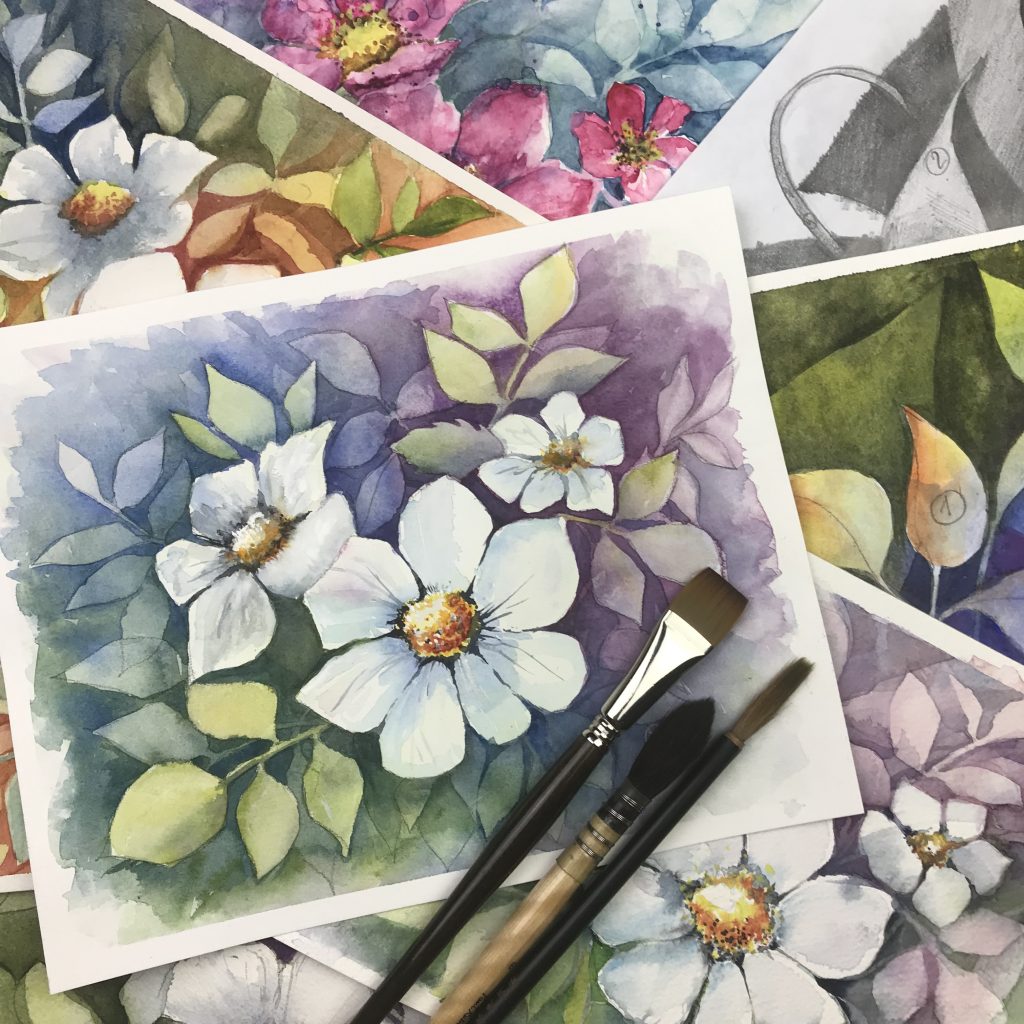
In this lesson you will study the negative space and you will practice multilayered washes.
You will experiment with different colour combinations to set up the mood, temperature and atmosphere in your paintings.
Video 112 min
Lesson 4
Alternative wash. Orchid.

In this lesson you will have fun by blowing and spraying coloured puddles to create background splash effects.
Video 107 min
Lesson 5
Flower portrait. Pansy.

In this lesson you will paint a portrait of a Pansy. You will work in Ala Prima to create the most realistic look of the petals.
You will use the “wet-on-wet” technique to create an unfocused effect of the background.
Video 78 min
Lesson 6
Flower Portrait. Rose.

In the final lesson of this course you will create the portrait of a gorgeous rose Violet’s Pride from the Downton Abbey Collection.
Video 141 min
Course Content
Get inspired by student’s work!
Watercolour paper, 100% cotton preferable (The Bee Paper Company, Strathmore 500 series, Paul Rubens 50% cotton) 4 small sheets and 4 big sheets (minimum + sheets for extra practising)
Drawing paper, any quality
Printer paper for printing the templates
Brushes:
Mop brush, size 6-8, D10-15 mm (Paul Rubens mop brush, squirrel hair)
Calligraphy brush, 5-8 mm (Calligraphy brush, 5 mm, wolf hair)
Flat synthetic brush, 3/4” (Escoda)
Detail brush, 2mm (optional) (Escoda)
Watercolour paint, preferable in tubes:
Light Yellow (Lemon Yellow,Daniel Smith)

Yellow (Cadmium Yellow, Daniel Smith)

Orange (Transparent Orange, Schminske)

Red (Quinacridone red, Daniel Smith)

Dark red (Permanent Alizarin Crimson, Daniel Smith)

Dark Pink (Rose Madder,Daniel Smith)

Bright Pink (Opera Rose, Daniel Smith) )
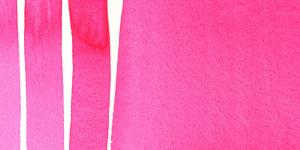
Rose (Quinacridone rose,Daniel Smith)

Blue Violet (Ultramarin Violet,Daniel Smith)
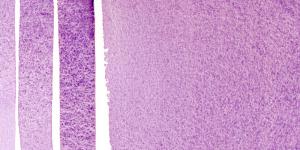
Violet (Mineral Violet,Daniel Smith)

Purple (Magenta,Daniel Smith)
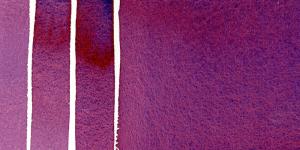
Blue (French Ultramarine, Daniel Smith)

Black Blue (Indigo, Holbein)

Dark red (Indian red, Daniel Smith)

Rusty (burnt Sienna, Daniel Smith)
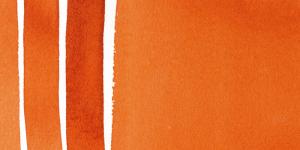
Dark Grey (Payne's Grey, Van Gogh)

Bright Green (Gold Green, Daniel Smith)

Dark Green (Undersea Green, Daniel Smith)

Turquoise (Turquoise, M. Graham)

Light Blue (Cerulean Blue, Van Gogh)

Pencils any quality, 3H and HB
Eraser, kneading one is preferable
Watercolour board (Any sturdy card stock)
Artistic tape (Any white or beige)
Hair dryer
Two jars with water
Paper towels
Sea sponge
Masking liquid (Incredible White Mask, Geofix)
Salt, Vinegar, Citric acid, rubbing alcohol and glycerine.


